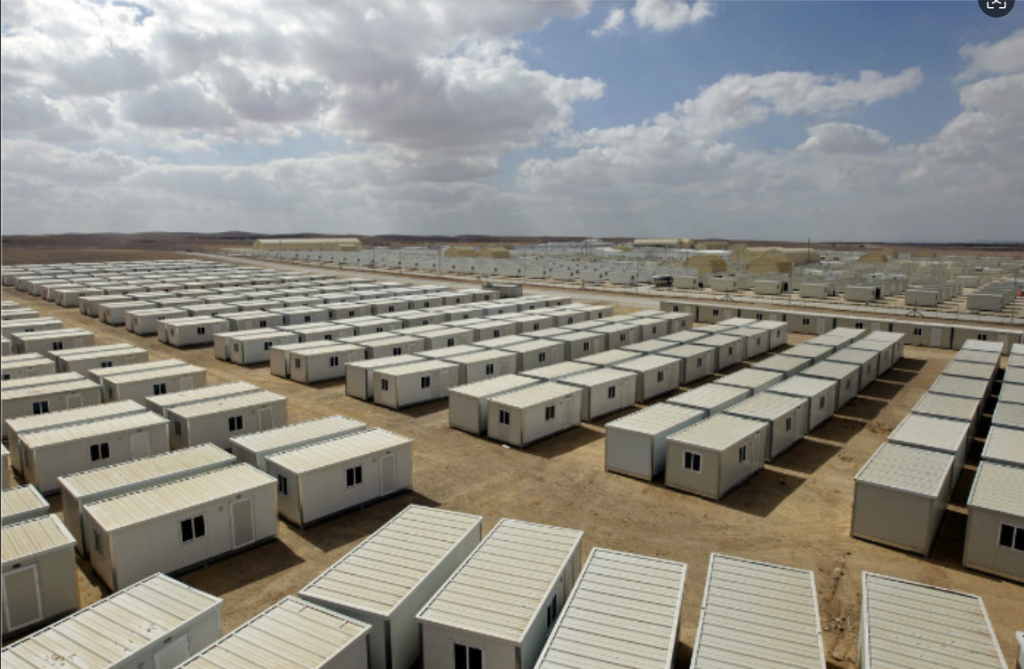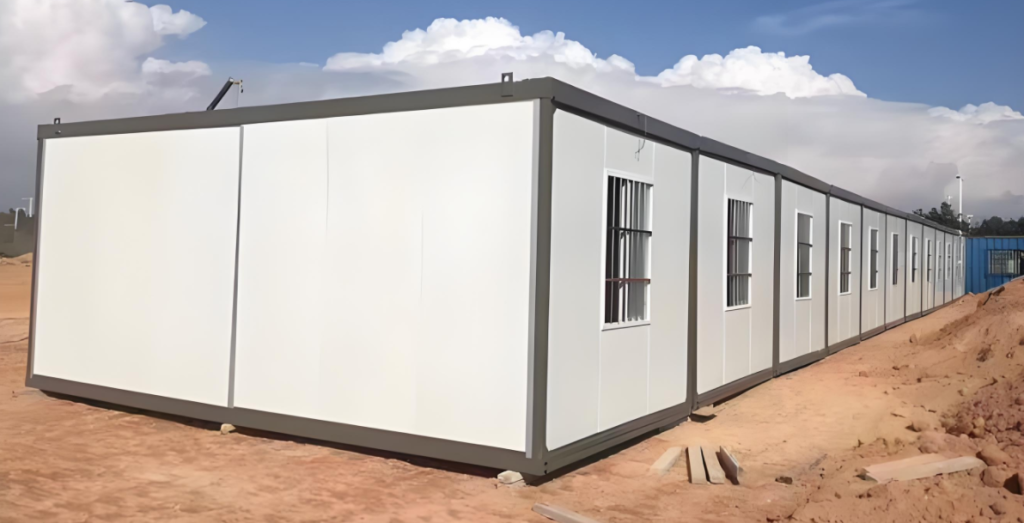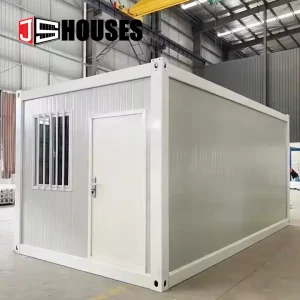Prefabricated Container Houses: A Revolutionary Solution for Post-Earthquake Emergency Housing
Introduction
Natural disasters, particularly earthquakes, pose significant challenges to communities worldwide due to their sudden onset and devastating impact. Among the most urgent needs in the aftermath of an earthquake is the provision of immediate shelter for displaced populations. Traditional emergency housing solutions, such as tents and temporary barracks, often fall short in terms of durability, comfort, and speed of deployment. In recent years, prefabricated container houses have emerged as a revolutionary alternative, offering a practical, efficient, and sustainable approach to post-disaster housing. This article explores the concept, benefits, implementation process, challenges, and future potential of prefabricated container houses in earthquake emergency response.

1. The Concept of Prefabricated Container Houses
Prefabricated container houses are modular structures made from recycled shipping containers or newly manufactured container-like modules. These units are designed to be transported easily and assembled quickly on-site. Originally used in the shipping industry, containers are inherently strong, durable, and standardized, making them ideal for conversion into habitable spaces. In the context of earthquake emergencies, they can be configured to serve as temporary homes, medical clinics, schools, or community centers.
The modularity of these houses allows for various configurations, from single-unit studios to multi-story complexes. They can be equipped with basic amenities such as insulation, electricity, plumbing, and windows, ensuring a safe and comfortable living environment. The prefabrication process involves manufacturing these components off-site in controlled factory conditions, which ensures high quality and reduces on-site construction time.

2. Advantages of Container Houses in Earthquake Emergencies
2.1 Rapid Deployment and Scalability
One of the most critical factors in post-earthquake scenarios is speed. Prefabricated container houses can be mass-produced, stored, and transported rapidly to affected areas. Their modular design enables quick assembly, often within days or even hours, compared to weeks for conventional temporary structures. This scalability allows governments and aid organizations to respond swiftly to large-scale displacement, providing shelter to thousands in a short period.
2.2 Durability and Safety
Earthquakes often cause recurring aftershocks, requiring emergency housing to be structurally resilient. Shipping containers are built to withstand harsh conditions, including heavy loads and extreme weather. When properly reinforced, they offer excellent resistance to seismic activity, ensuring the safety of occupants. Additionally, containers can be fire-resistant and designed to meet strict building codes, reducing risks associated with traditional temporary shelters.
2.3 Cost-Effectiveness
Using recycled shipping containers significantly lowers material costs. The streamlined manufacturing and assembly process also reduces labor expenses. While initial investments might be higher than those for tents, the long-term benefits—such as reusability and potential for permanent integration—make container houses a cost-effective solution. Moreover, their durability minimizes maintenance costs over time.

2.4 Sustainability and Environmental Benefits
Repurposing shipping containers reduces waste and the carbon footprint associated with new construction. Container houses can incorporate eco-friendly features like solar panels, rainwater harvesting systems, and energy-efficient insulation. This aligns with global sustainability goals and provides displaced communities with a dignified living environment that respects the environment.

2.5 Flexibility and Adaptability
Container houses can be customized to meet diverse needs. For instance, they can be designed to accommodate families of different sizes, people with disabilities, or specific functions like healthcare units. After their temporary use, these structures can be relocated, repurposed for other community needs, or integrated into permanent housing projects.
3. Implementation in Post-Earthquake Scenarios
3.1 Pre-Disaster Preparedness
Effective use of container houses requires pre-disaster planning. Governments and NGOs can stockpile modular units in strategic locations or establish partnerships with manufacturers for rapid production. Training local teams in assembly techniques ensures efficient deployment when disasters strike.

3.2 On-Site Deployment Process
The implementation involves several steps:
- Site Assessment: Identifying safe, accessible locations with basic infrastructure.
- Transportation: Moving container modules via trucks, ships, or helicopters.
- Assembly: Using cranes or other machinery to position and connect modules.
- Installation: Adding utilities like water, power, and sanitation systems.
- Community Integration: Involving residents in the process to foster a sense of ownership.
3.3 Case Studies
- 2010 Haiti Earthquake: Container houses were used to provide temporary shelter and medical facilities, demonstrating their utility in resource-limited settings.
- 2015 Nepal Earthquake: Modular container units served as schools and clinics, highlighting their adaptability in rugged terrains.
- 2023 Turkey-Syria Earthquake: Large-scale deployment of container villages showcased their scalability and efficiency in addressing massive displacement.
4. Challenges and Limitations
Despite their advantages, container houses face several challenges:
- Thermal Regulation: Without proper insulation, metal containers can become extremely hot or cold, requiring climate-control solutions.
- Logistical Complexities: Transporting heavy modules to remote or damaged areas can be difficult.
- Social and Cultural Acceptance: Some communities may resist non-traditional housing designs, necessitating culturally sensitive adaptations.
- Regulatory Hurdles: Compliance with local building codes and land-use policies can delay deployment.
5. The Future of Container Houses in Disaster Management
Technological advancements are addressing existing limitations. Innovations in lightweight materials, smart insulation, and renewable energy integration are enhancing comfort and efficiency. Digital tools like BIM (Building Information Modeling) and IoT (Internet of Things) can optimize design and monitor structural health. Furthermore, public-private partnerships and international collaborations can standardize protocols and reduce costs.
Conclusion
Prefabricated container houses represent a paradigm shift in emergency housing for earthquake-affected communities. Their rapid deployment, durability, cost-effectiveness, and sustainability make them a superior alternative to traditional temporary shelters. While challenges remain, ongoing innovations and strategic planning are paving the way for wider adoption. As climate change and urbanization increase the frequency and severity of disasters, container houses offer a resilient, humane, and forward-thinking solution to one of humanity’s most pressing needs—safe shelter in times of crisis. By investing in this technology, we can build a more responsive and compassionate world for future generations.

